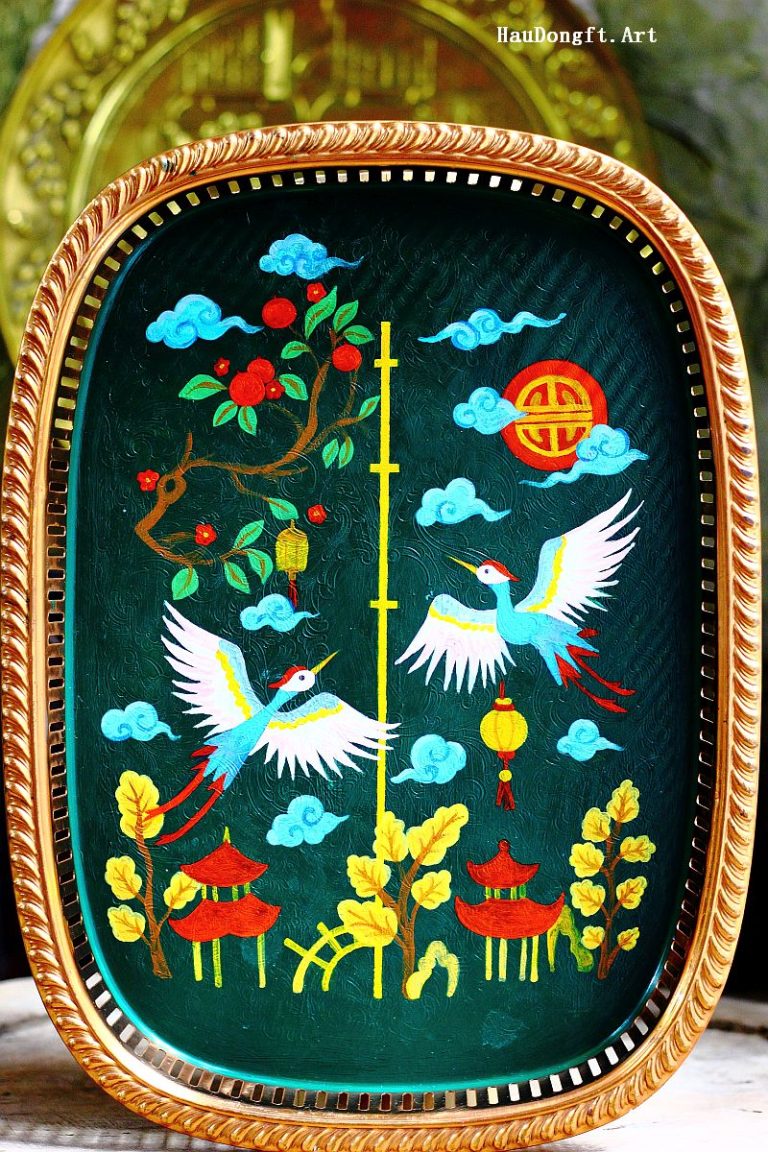
Part 1- HƯƠNG NGHĨA TEMPLE
Hương Nghĩa Temple is located at No. 13 Đào Duy Từ Street, Hàng Buồm Ward, Hoàn Kiếm District, Hanoi. In the past, this area was known as Hương Bài Hamlet (which later merged with Kiên Nghĩa Hamlet to form Hương Nghĩa Hamlet), belonging to Tả Túc Canton, later renamed Phúc Lâm Canton.
Hương Nghĩa Temple is dedicated to Cao Tứ and his wife, Princess Phượng Minh. Cao Tứ was the younger brother of Cao Lỗ, the legendary inventor of the magical crossbow (nỏ thần) that helped King Thục An Dương Vương defend his kingdom. Cao Tứ was born on the 10th day of the first lunar month, Year of the Pig (Đinh Hợi), during the reign of the 18th Hùng King. He was known for his intelligence and extraordinary physical strength. When King An Dương Vương held imperial examinations at Cổ Loa, Cao Tứ took part and, excelling in both civil and military disciplines, was granted the title “Governor of Đại La Citadel” (later renamed Thăng Long).
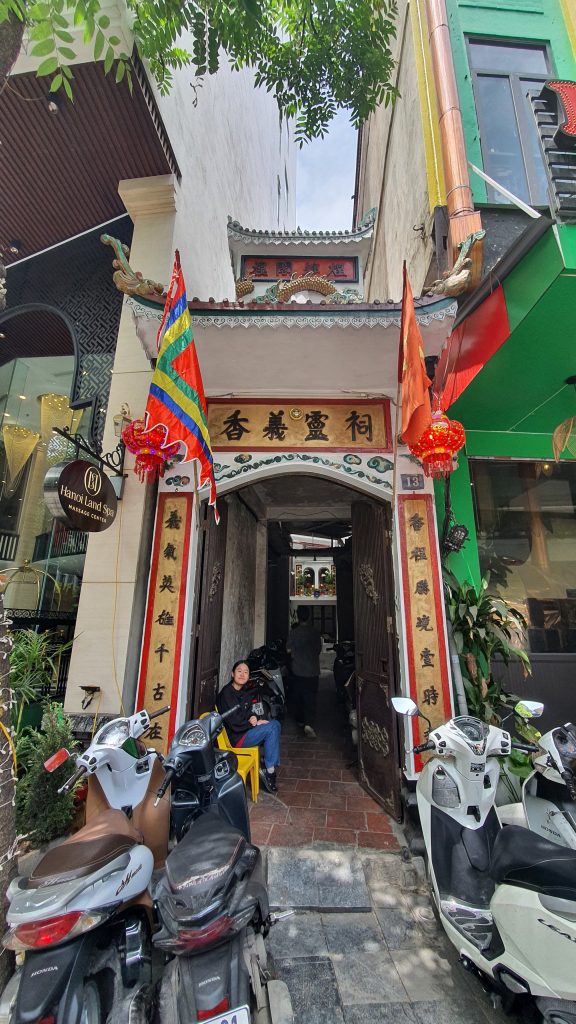
Hương Nghĩa Temple seen from Dao Duy Tu street
Renowned for his martial prowess, Cao Tứ served as a general under the Thục dynasty, stationed along the Tô Lịch River in Hương Bài and Hương Nghĩa. The king gave him his daughter, Princess Phượng Minh, in marriage. Cao Tứ built a royal residence in Hương Nghĩa and commanded naval forces that achieved a resounding victory against the Qin invaders. Later, when Triệu Đà (Zhao Tuo) invaded, Cao Tứ was appointed Admiral of the Waterways (Thủy đạo tướng quân), establishing five military posts along the Tô Lịch River to fight the invaders for seven to eight years, successfully repelling their forces.
However, peace was short-lived. Trọng Thủy, under the guise of diplomacy, married Princess Mỵ Châu, daughter of An Dương Vương, and stole the magical crossbow. With this advantage, Triệu Đà launched another invasion. Cao Tứ was ordered to defend the Tô Lịch River but was ultimately killed in battle. Overcome with grief and loyalty, Princess Phượng Minh drowned herself in the Bắc Giang River to remain faithful to her husband.
In recognition of their valor and sacrifice, the king posthumously honored them and granted the villagers of Hương Nghĩa permission to build a temple in their memory. The “Hương Nghĩa Temple Stele of Merit” (Hương Nghĩa đình công đức bi), erected in October of the Year of the Goat (Quý Mùi), Bảo Đại Era (1943), praises Cao Tứ’s talent, wisdom, and heroic deeds, venerated by emperors and revered by the people. It records that, after years of deterioration, the temple was restored with the approval of the French Resident-Superior to preserve its sanctity. The stele also commemorates the collective effort of villagers, led by Lưu Văn Năm, to rebuild the temple into a grand sanctuary to honor heroes from the Hùng Kings’ era, ensuring its lasting spiritual and cultural significance.
Today, Hương Nghĩa Temple stands prominently in the heart of Hanoi’s Old Quarter, occupying a picturesque location. Its architectural layout consists of a gate, narrow courtyard, and main sanctuary in the shape of the Vietnamese character “Đinh” (丁). The simple two-tiered, eight-roofed brick gate faces the bustling Đào Duy Từ intersection. Passing through the gate leads to a brick-paved courtyard and into the main temple hall, which consists of a front worship hall (tiền tế) and a rear sanctuary (hậu cung).
The front worship hall has three bays and two side compartments, constructed with brick walls and a traditional tiled roof. The roof is supported by six wooden trusses in the chồng rường con nhị style, intricately carved with stylized floral motifs. The central bay features wooden partition doors carved with blooming chrysanthemums, their sharp petal tips resembling spears.
The rear sanctuary is a three-bay structure connected to the front hall by a covered passage. Its roof frame is simpler, with undecorated wooden trusses.
Among the temple’s precious relics are:
• An ancient thần phả (divine genealogy record) in classical Chinese, chronicling Cao Tứ’s deeds.
• Two royal decrees honoring Cao Tứ: one from the 44th year of the Cảnh Hưng era (1783), and another from the 9th year of the Gia Long era (1801).
• Four Nguyễn dynasty steles, including the “Hậu Thần Stele” (Hậu thần bi ký) erected in the Year of the Monkey (Nhâm Thân), Bảo Đại Era Year 7 (1932), and the “Hương Nghĩa Temple Stele of Merit” (1943).
• Two ancient wooden statues of Cao Tứ and Princess Phượng Minh housed in a carved wooden shrine.
• Four wooden thrones, nine wooden altars, and two wooden spirit tablets (one for each deity).
• Six wooden couplets and five horizontal plaques extolling the hero’s virtues, including one inscribed “Thánh cung vạn tuế” (“Eternal glory to the sacred hero”).
One of the couplets reads:
“Duyệt ngã Nam tiền thông giám di biên thuỷ hoá, cổ trung tiêu tiết nghĩa
Kiến La Thành tam danh từ trĩ lập, địa linh thánh tích đối linh hương”
Translated:
“In the chronicles of our southern land, history records noble loyalty and virtue.
In Đại La Citadel stand three renowned temples, sacred relics steeped in fragrance.”
Hương Nghĩa Temple, with its legends of Cao Tứ and Princess Phượng Minh, is a valuable source of Vietnamese folk history. It embodies the devotion of Thăng Long–Hanoi’s residents to their ancestral heroes from the nation’s early struggles for sovereignty. It enriches the Old Quarter’s spiritual atmosphere, adding depth and historical resonance to this storied neighborhood.
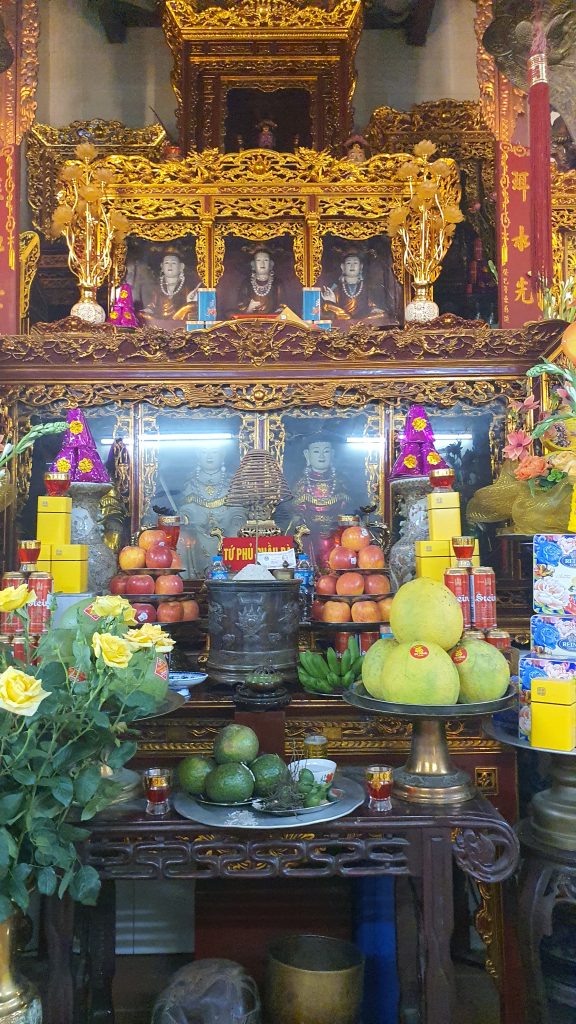
Altar of the Four Places Dames inside Hương Nghĩa Temple
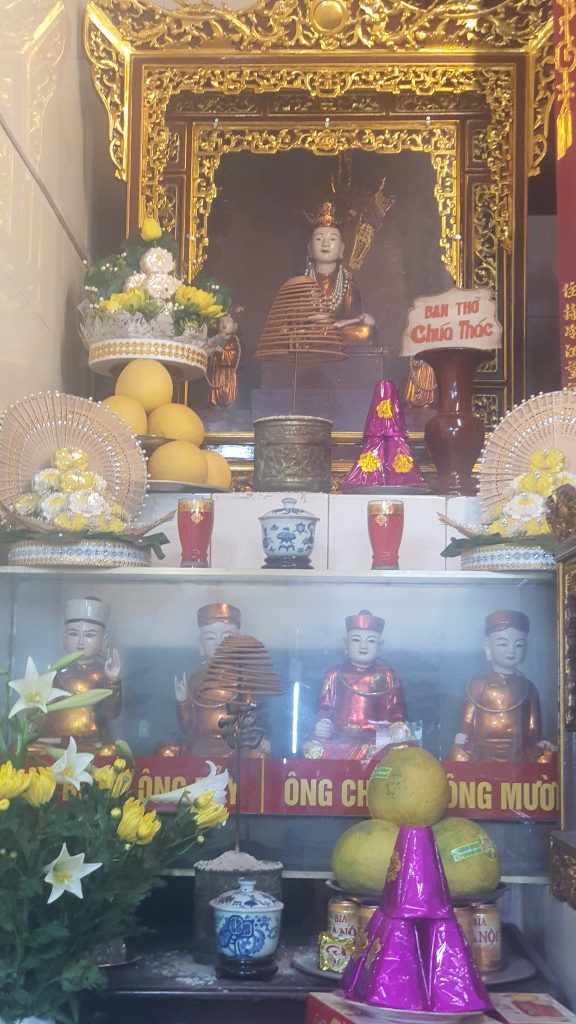
Altars of Thác Bờ Goddess and the 7th and the 10th Princes inside Hương Nghĩa Temple
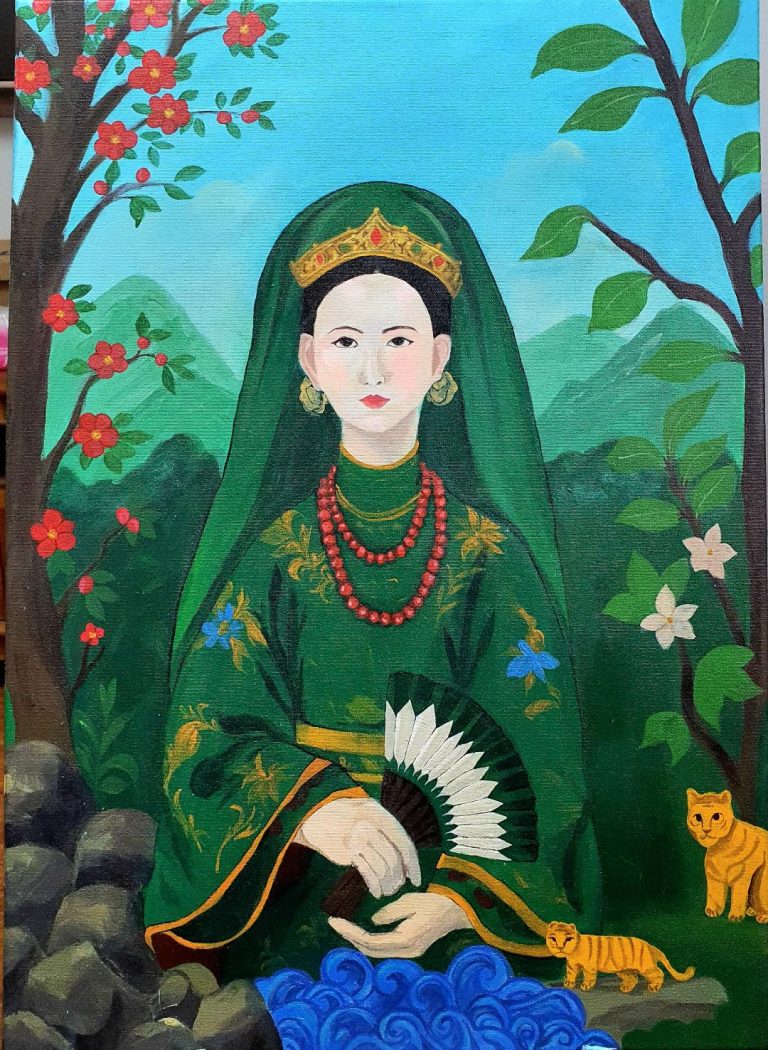
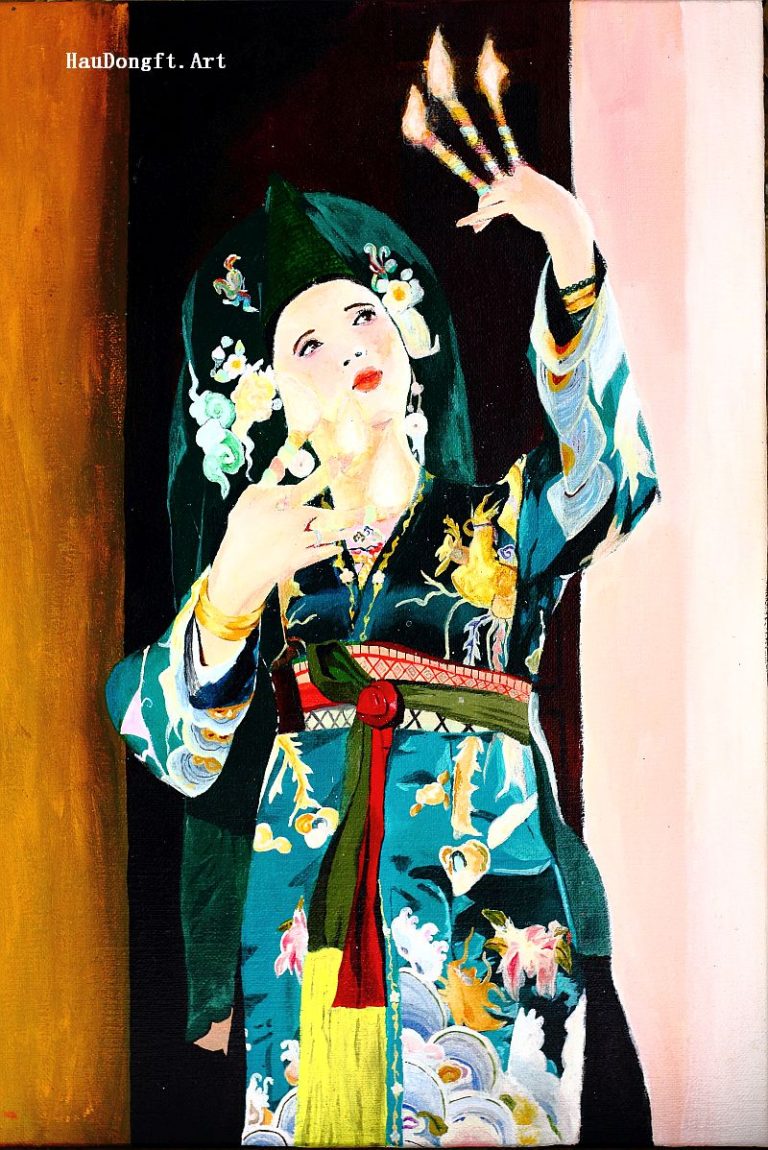


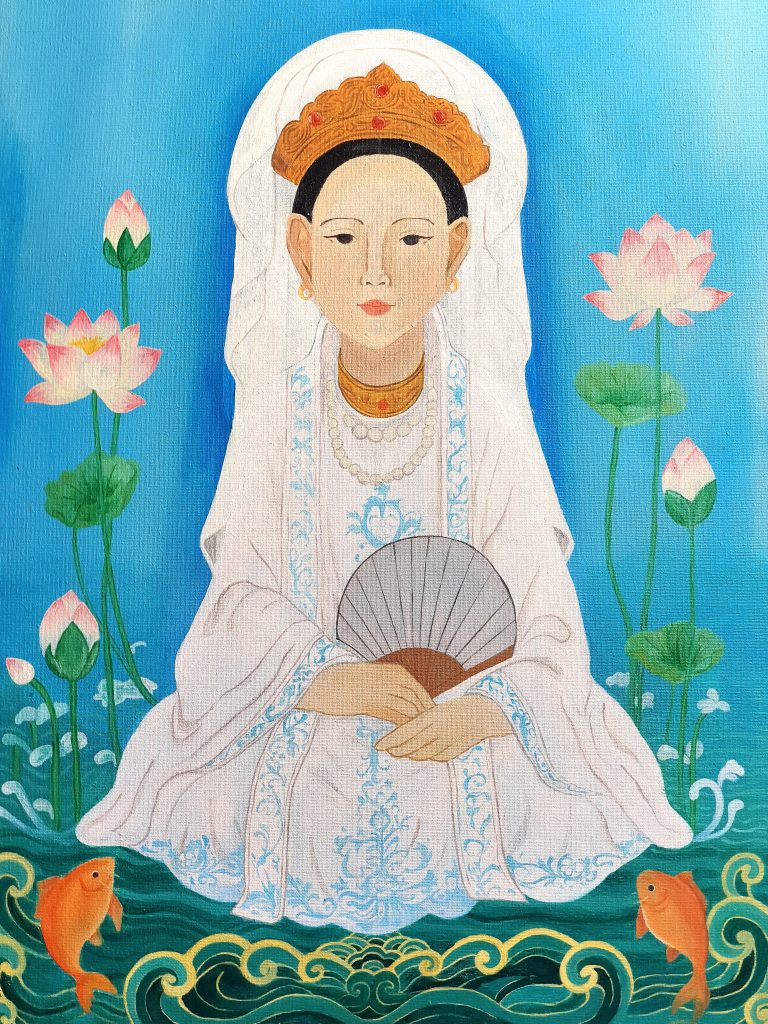


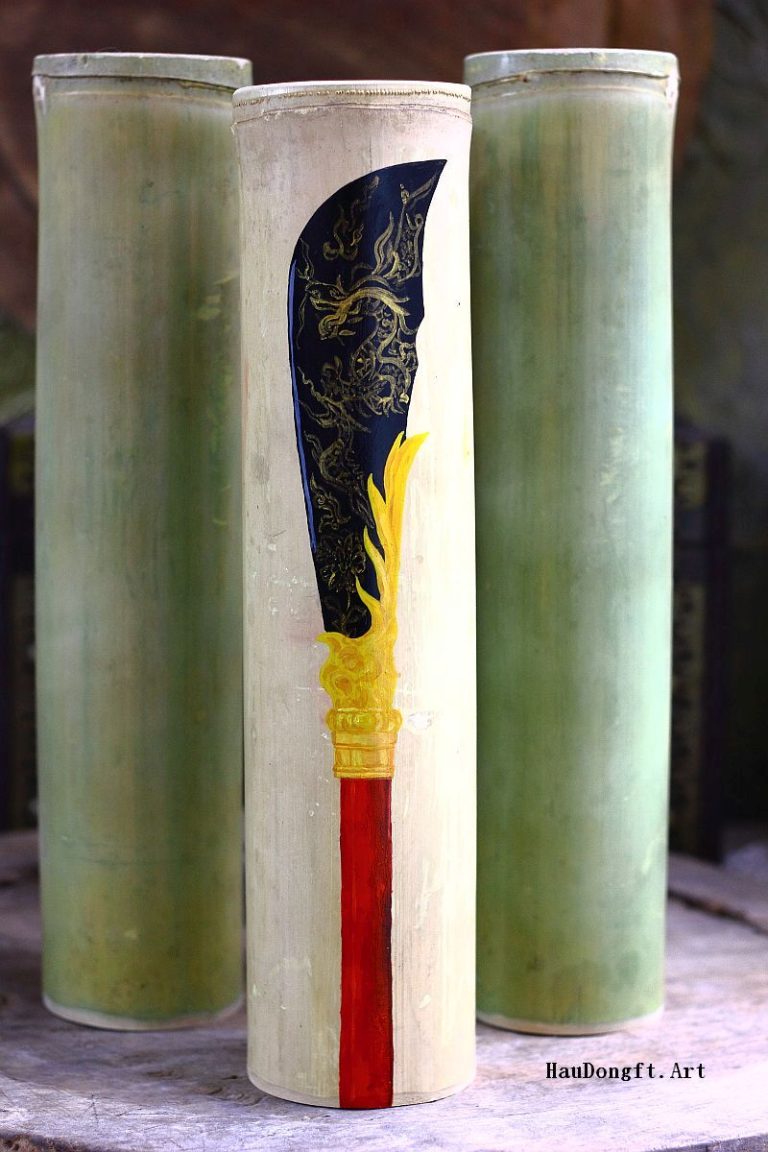
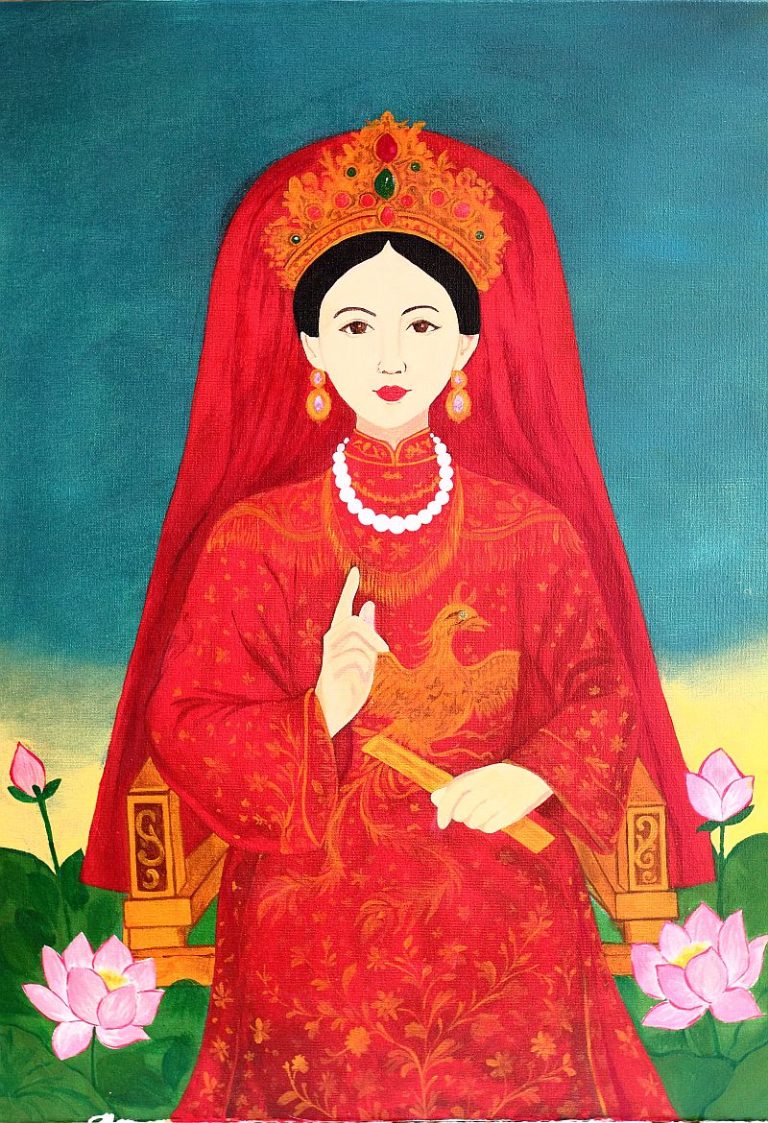

© 2025 Hau Dong Featuring Art. All rights reserved. Contact